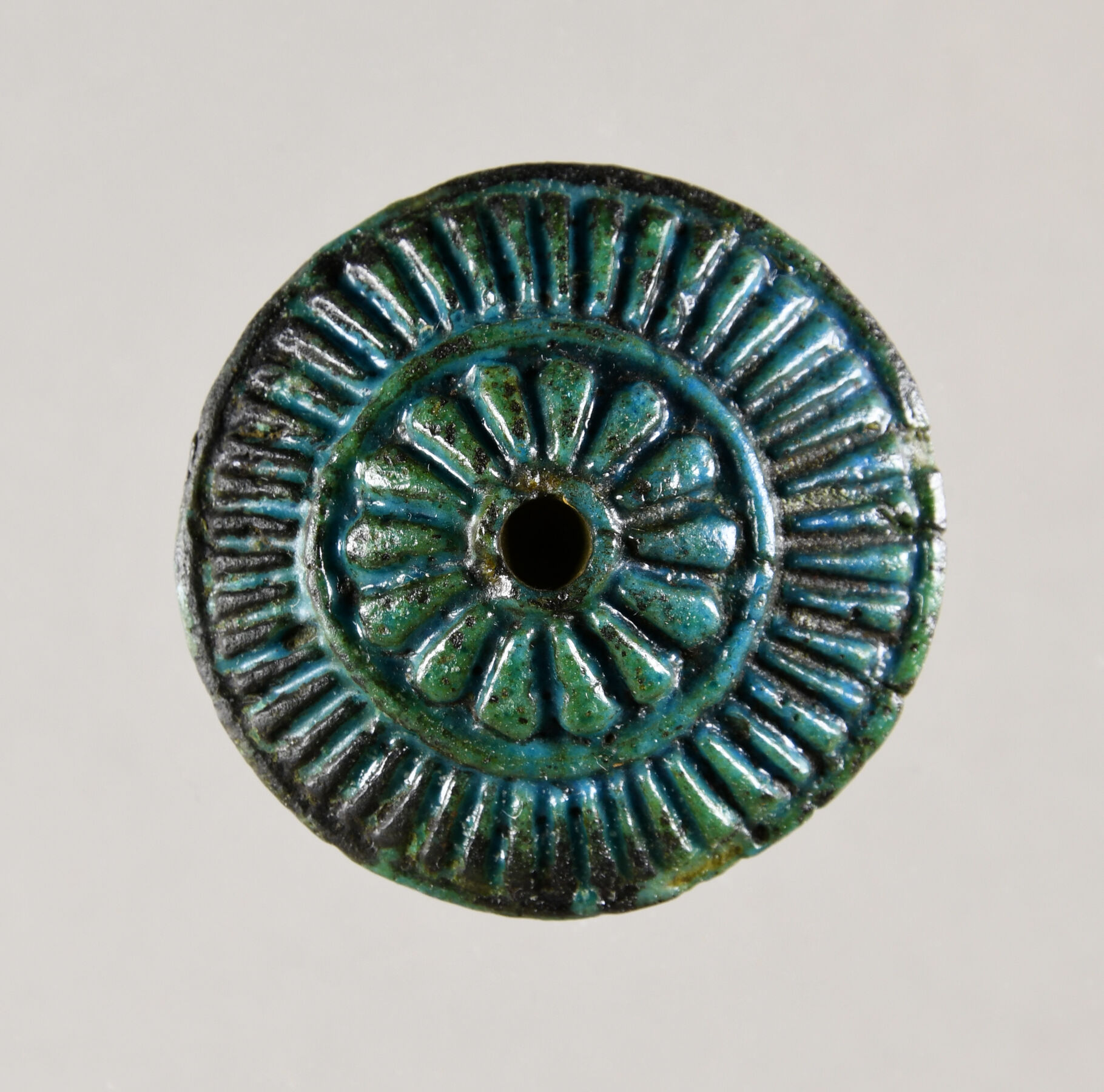Jewelry in ancient Egypt was worn for adornment and had amuletic and protective properties. The ancient Egyptian word for “necklace” is shashayt, derived from the root sha, meaning “to determine, impose fate.”1
Necklaces made of blue and green faience beads imitated the semiprecious stones lapis lazuli and turquoise. These stones carried symbolic properties.2 Green and turquoise symbolized new life and resurrection. Lapis lazuli related to the night sky and the primordial waters. Carnelian-red evoked blood and the heat of the sun. Sometimes faience beads were interspersed with amulets of protective deities. The mass production of glass beads began in the New Kingdom and reappeared in the Ptolemaic and Roman periods.3
Women in the New Kingdom wore earplug earrings decorated with rosettes.4 The front has a central rosette within a circle and radiating raised lines decorating the outer ring. The backside has a design of a thirteen-petal rosette. A grooved edge between the front and the back anchored the plug into the earlobe piercing.
MH
-
Hannig, Rainer. 2006. Großes Handwörterbuch Ägyptisch - Deutsch (2800-950 v. Chr.): die Sprache der Pharaonen (Marburger Edition), 4th revised ed. Kulturgeschichte der Antiken Welt 64. Mainz am Rhein: Philipp von Zabern.. ↩︎
-
Robins, Gay. 2001. “Color Symbolism.” OEAE I: 291-294.. ↩︎
-
Dubin, Lois Sherr. 2009. The History of Beads from 100,000 BC to the Present. New York: Abrams.. ↩︎
-
Capel, Anne K. and Glenn E. Markoe, eds. 1996. Mistress of the House, Mistress of Heaven: Women in Ancient Egypt. New York: Hudson Hills Press.. ↩︎
Bibliography
- Capel and Markoe 1996
- Capel, Anne K. and Glenn E. Markoe, eds. 1996. Mistress of the House, Mistress of Heaven: Women in Ancient Egypt. New York: Hudson Hills Press.
- Dubin 2009
- Dubin, Lois Sherr. 2009. The History of Beads from 100,000 BC to the Present. New York: Abrams.
- Hannig 2006
- Hannig, Rainer. 2006. Großes Handwörterbuch Ägyptisch - Deutsch (2800-950 v. Chr.): die Sprache der Pharaonen (Marburger Edition), 4th revised ed. Kulturgeschichte der Antiken Welt 64. Mainz am Rhein: Philipp von Zabern.
- Robins 2001
- Robins, Gay. 2001. “Color Symbolism.” OEAE I: 291-294.
